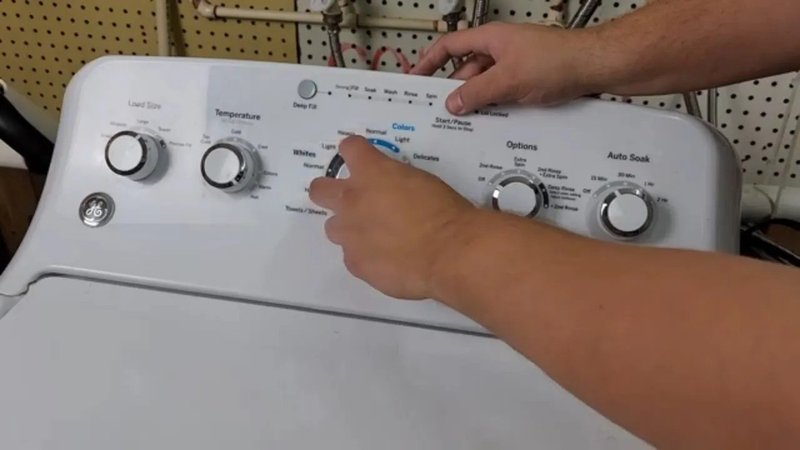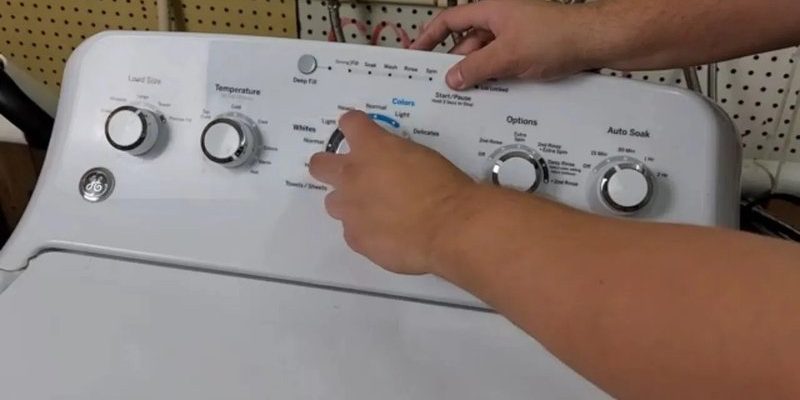
The E1 error code on a GE washing machine generally indicates a problem with the water supply, often caused by issues like a kinked hose or a clogged filter. It’s like when you’re trying to water your garden, but the hose is bent, and the water barely trickles out. Frustrating, right? Similarly, your washing machine isn’t getting the water it needs to do its job, leaving your laundry cycle incomplete. However, understanding the underlying causes and taking some proactive measures can save you from future laundry-day headaches.
Understanding the E1 Error Code
Before we jump to solutions, let’s understand what’s going on inside your machine when you see an E1 error code. Picture this: your washing machine is like a complex symphony orchestra, with each part playing a crucial role. When the water inlet valve gets stuck or clogged, it’s as if the lead violinist is out of tune. The whole cycle gets disrupted, and your washing machine cannot perform its task effectively.
The E1 code specifically suggests that your washing machine is having difficulty filling with water. The cause could range from a clogged filter to a faulty water inlet valve. In some cases, the problem might be as simple as a kinked water hose. Imagine trying to drink from a straw with a knot in it—inefficient, right? Similarly, if water can’t flow freely into your machine, it can’t wash your clothes.
To make things more challenging, E1 might sometimes pop up due to low water pressure in your home. It’s like trying to fill a pool with a trickle of water. But don’t panic—by regularly checking the components we’ll discuss, you can ensure smooth sailing (or should I say, washing?) in the future.
Regular Maintenance and Inspection
Preventing the E1 error in the future requires regular check-ups on your washing machine, much like how you’d visit a doctor for a health check-up. First, inspect the water hoses. Make sure they’re not twisted, bent, or damaged. Just like a garden hose, any kinks or strains can limit the flow of water, triggering the E1 error. If you notice any visible damage, consider replacing the hose to ensure a smooth water supply.
Next, pay attention to the water inlet filters. These filters can become clogged with mineral deposits and debris over time, much like how an air filter in your car needs periodic cleaning or replacement. Pull them out and give them a good cleaning to ensure there’s no blockage. This simple task can often prevent the E1 error from rearing its head again.
Finally, don’t forget to check the water pressure. If you notice your home’s water pressure is consistently low, you might need to contact a professional to evaluate it. Too little pressure means your washing machine won’t fill with water within the necessary time frame, leading to that dreaded error code.
Upgrading and Replacing Essential Parts
Sometimes, a little upgrade is all your washing machine needs to function smoothly. If you’ve identified a faulty water inlet valve, it might be time for a replacement. Think of it as swapping out old, worn-out sneakers for a fresh pair—it just makes everything work better. An efficient inlet valve ensures the correct amount of water flows into the machine, keeping error codes at bay.
Moreover, consider investing in quality replacement parts. High-quality hoses and valves might seem like a big investment upfront, but they’ll save you money and aggravation in the long run. Much like opting for durable tires for a smoother ride, good washing machine parts ensure fewer disruptions.
Additionally, if your machine is older, it might be worth contemplating an upgrade to a newer model. Modern GE washing machines come with improved features designed to prevent common errors, including E1. Of course, this depends on your budget and needs, but it’s worth considering if your machine is showing its age.
Preventive Tips and Best Practices
Here’s the deal: the best way to handle errors is to prevent them from occurring in the first place. Start by ensuring that you’re not overloading your washing machine. Imagine trying to stuff a small suitcase with too many clothes—you’re bound to have issues. Overloading can strain your machine, leading to various errors, including E1.
It’s also wise to stick to your washing machine’s manual instructions—think of it as the ultimate guidebook to your machine’s happy life. Follow recommended load sizes and wash cycles, and your washing machine will reward you with fewer error codes.
Lastly, develop a regular maintenance routine. Just like how a car needs regular oil changes, your washing machine needs periodic attention to keep it running smoothly. Schedule routine inspections to catch potential problems before they become major headaches. And remember, when in doubt, consult a professional—they can diagnose and fix issues that might be beyond a beginner’s expertise.
By taking these proactive steps, you’ll not only prevent the E1 error code but also extend the lifespan of your washing machine. Happy washing!
